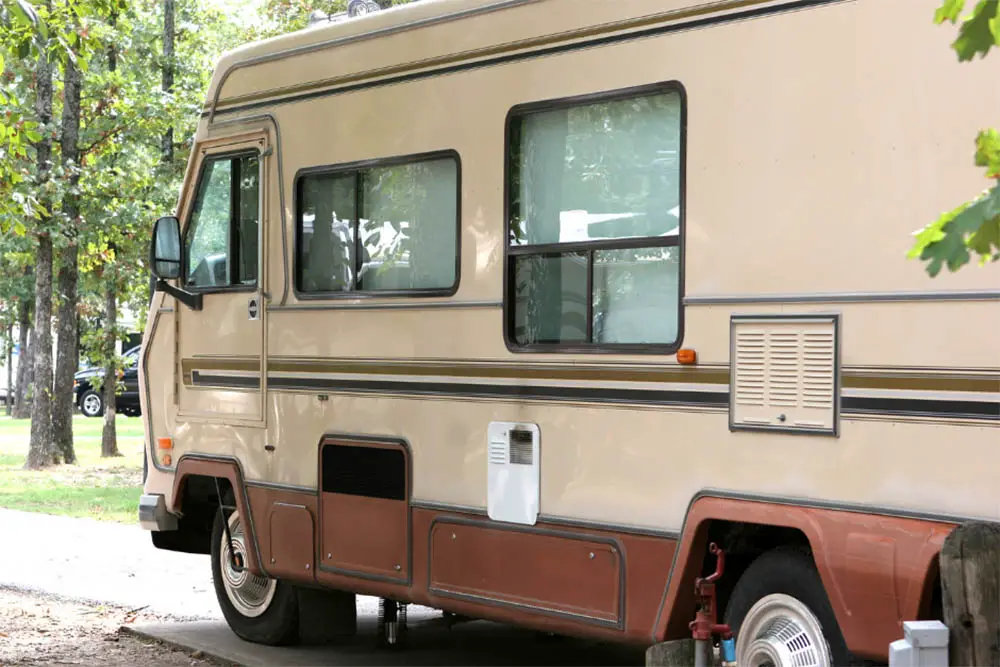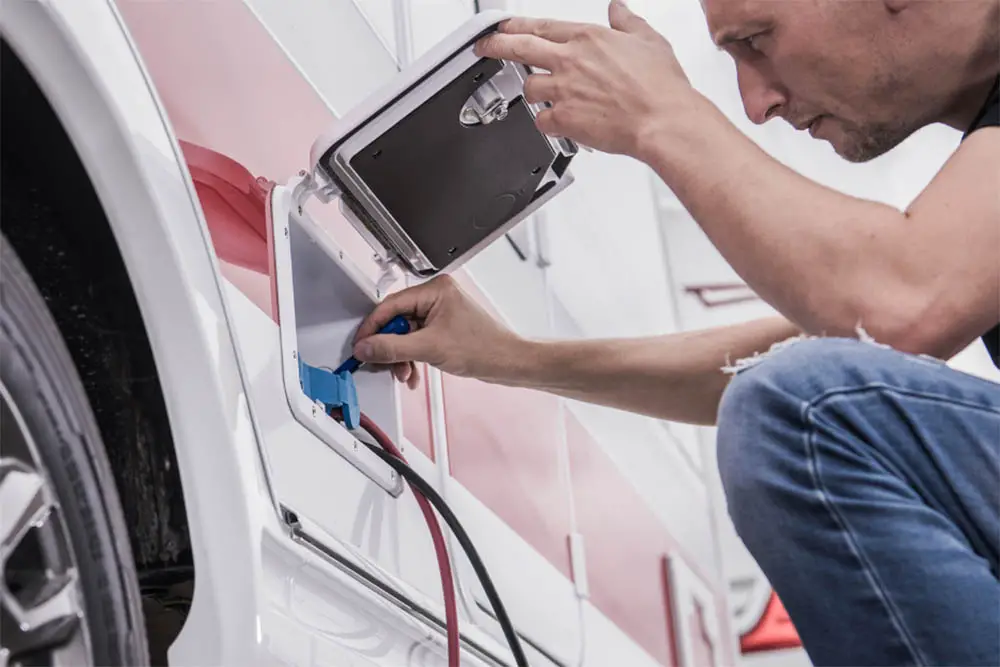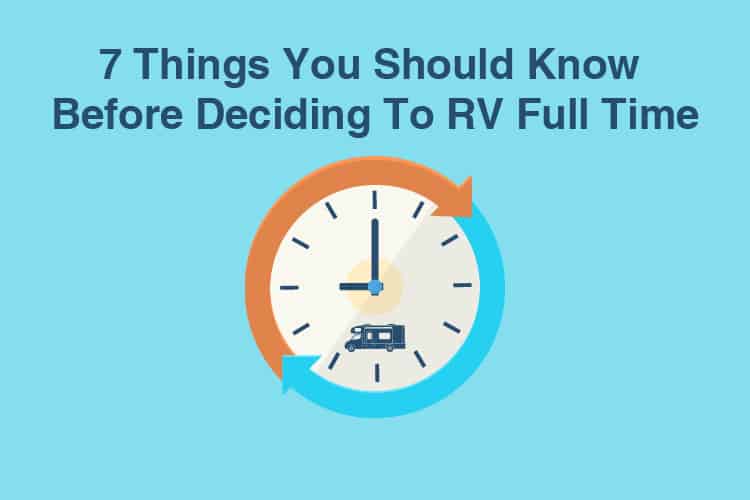When you first think of RV holidays, your mind might jump straight to hot summer evening’s spent enjoying the Sunshine.
However, this isn’t the only type of RV break that you can have. In fact, RV holidays in the colder months are becoming just as popular.
Some people love traveling in their RV all year round, others like to use their RV in the winter as a hunting base.

Either way, there’s no denying that a heater or furnace is essential if you want to be able to use it in the colder months.
However, as you probably already know, RVs can often experience issues. Just like any motor vehicle can.
One common issue that these vehicles can experience is a problem with their furnace, which isn’t really ideal when you’re out traveling in freezing weather.
So what happens when your RV furnace won’t ignite?
In this complete guide, we’re telling you absolutely everything you need to know about troubleshooting an RV furnace that won’t ignite. So, if you want to find out more, keep on reading.
Possible Causes for this Issue
To identify what is causing the problem with your RV furnace, you first need to understand some common reasons for this issue.
While the furnace in your RV is just one component of this vehicle, it is connected to a lot of other parts that could potentially be the cause of this issue.
In this guide, we’ll take a look at how you can troubleshoot these issues in a lot more detail.
But, for now, let’s just have a quick overview of some of the main problems that affect RV furnaces, and prevent them from operating properly.
These include:
- Basic Electrical Issues
- Problems with the Propane Tank or the Propane Line
- Problems with Airflow to the Furnace
- Issue with the Thermostat
- A Thermocouple or Pilot Light that have Burned out
So, now that we’ve looked at these issues briefly, let’s take a further look at how you might troubleshoot for them.
Why isn’t my Furnace Working?
As you already know, it is impossible for us to give you the specific answer as to what is preventing your furnace from working.
This is because different types of furnaces are more prone to some issues than others, and without knowing the specific furnace that your RV has, it is impossible to help.
That being said, we can give some pointers of where to look for the issue depending on the type of furnace you have.
If your RV is fitted with a wall furnace, or a propane heater, then the best place to begin is the propane tank, before you look anywhere else.
It is possible that you might have unknowingly turned off the propane flow, and this would be what is preventing your furnace from working.
The majority of RVs are fitted with propane heaters, so another possible cause for your furnace not immediately heating up is the cold weather.
In low temperatures, propane will contract which can reduce the pressure, and cause it to take longer for your furnace to heat up. But these are just two of the reasons why your furnace isn’t working.
How to Troubleshoot and Fix an RV Furnace that won’t Ignite
Now, let’s take a look at some more potential issues, and how you may be able to fix them.
A Wiring Problem Stopping the Electricity
An important component in the running of your furnace is the onboard batteries, so an issue with the electrical supply from these to your furnace could prevent it from igniting.
So, a good place to begin troubleshooting is at these batteries.
The onboard batteries of your RV will be connected to the furnace using a series of wires and cables.
So, to identify this issue with your furnace, you need to begin by looking at the wires.
You should inspect them thoroughly, looking for any loose or damaged wires. If you find any, then there is a good chance that these are what are preventing your furnace from igniting.
When you begin looking at the wires, we would recommend starting at the furnace end of the wiring.
There are multiple points on the furnace where the wires from the battery will connect to the furnace, so it is possible that a vibration in the furnace could loosen a wire.
It is also possible that these wires might become overloaded and break.
While this is an easy issue to identify, it is not a fix that you will be able to make yourself (unless you have experience with electrical wiring, of course).
So, if you pick up an issue with this, you should contact a professional.
A Damaged Wire Preventing Ignition
Similarly, your RV furnace could be prevented from starting by a damaged wire in the ignition system.
The wiring issues that we’ve just looked at should be more easily visible, however the wires in the ignition system will be harder to access as you will need to open up this component of the furnace to access them.
However, once you open up the ignition system of your furnace, the process of checking the wires is exactly the same as we looked at earlier.
Follow the wires within the ignition system to look for any damage, corrosion, or loose connections.
All of these issues are likely to prevent your furnace from working properly. If you observe a loose connection, you should tighten it.
If you cannot see any damage in this area, it is also good to check out the connections on the battery itself.
It is possible for the battery terminals to corrode around the wiring, which would prevent your RV furnace from operating properly.
If you find this, then you can scrub the corroded terminals with water, baking soda and a toothbrush. This should improve the connection, and get your furnace working again.
A Problem with the Thermostat
Something else that can prevent your furnace from working, which you may not have thought of, is the thermostat.
When it comes to your furnace, the thermostat is the brain in the operation, so if there is an issue with this, then your entire furnace is going to malfunction.
There are two main things that can go wrong with your thermostat. Either they have a component failure, or they burn out.
One of the most common component failures that occurs in a thermostat is the sensor dying.
The sensor is very important as it dictates whether the furnace will light or not, so if this stops working, your furnace will not ignite.
Should the sensor of your thermostat die, then it is best to replace the entire thermostat as this is easier than just replacing the sensor.
However, it is also possible for a dead battery, or loose wire, to prevent your thermostat from working properly.
So, before you replace your entire thermostat, troubleshoot both of these issues to see if they are the cause.
Check (and Replace) Thermostat Batteries
We did just mention this briefly, but let’s take a closer look at how you check if your thermostat’s batteries have died.
In some RVs, the thermostat is directly connected to the onboard battery, if your RV is one of these then you should skip this step and move onto the next one.
But, if your thermostat is run on regular batteries, then these might be the reason your furnace is not igniting.
As we mentioned in the last point, the thermostat plays an essential role in activating the furnace. So, if your thermostat isn’t working, then your furnace won’t either.
In most battery-powered thermostats, changing the battery is simple. All you need to do is open up the thermostat, and locate the batteries.
You can then remove the old batteries and replace them with new ones.
Most thermostats will let you know that the batteries are running low, but if you have not been in your RV recently then you might have missed this. So, it is always a good idea to check the batteries.
Check (and Tighten) Loose Thermostat Wires
But, the batteries aren’t the only thing that can go wrong with the thermostat. It is also possible for the wires in your thermostat to go loose.
However, this is usually very rare as the thermostat isn’t usually put under any strain, so the wires very rarely grow loose.
But, if the wires for your thermostat have become loose, then this is usually fairly easy to diagnose.
This only really happens with thermostats that have digital displays, so if your display starts going wild with inaccurate readings and flashing lights, then it is likely due to a loose wire.
Unfortunately, checking the wires in your thermostat isn’t as easy as checking wires in other components of the furnace.
To do this, you will need to remove your thermostat from the wall, which can be a messy job. Once you have done this, you can give the wires on the back of the thermostat a visual inspection.
Most of the wires in a thermostat will be held on with small screws, so if you observe any loose wires, simply tighten the screws and this should fix the issue.
Check for Battery Corrosion
We briefly mentioned battery corrosion earlier, but let’s have a deeper look at how to identify and fix this. To identify this, you need to begin by taking a close look at the terminal and connections of the battery.
Overtime, corrosion can cause a build up of green/white material to build up on these areas. So, if you notice this, then corrosion has likely occurred.
To fix this issue, you will need to remove the corrosion from the battery terminals. Often, simply cleaning them is enough to get the furnace running again.
To do this, you should begin by combining baking soda and water to make your cleaning mixture. You should then disconnect all the wires from the connection that you are looking to work on.
After that is done, you simply need to apply the cleaning solution onto the affected terminals.
You can then take an old toothbrush and scrape away all the corroded material. When this is done, thoroughly dry the area, and then reconnect the wires. Your furnace should then start operating again.
Low or Dead Onboard Battery
Following on with battery issues, it is also possible for your onboard battery to die or become low in power.
This might come as a shock, but just like car batteries can die, so can the onboard battery of your RV.
If your onboard battery becomes damaged or dies completely, then this will prevent your furnace from working.
It is easy to spot a dead onboard battery, as none of the electrical features on your RV will work. But, spotting a dying onboard battery is a lot more difficult.
You might suspect that this is the issue if you find multiple electrical components of the RV struggling to work.
But, to diagnose this issue, you will need to use a tool known as a multimeter.
To do this, you will need to connect the multimeter to the onboard battery of your RV. This device will then take a reading of the voltage that the battery is producing.
If it is anything less than 10 volts then your battery is the issue.
To fix this issue, you can either disconnect your battery and connect it to a charger, or simply replace the current battery with the backup battery. Your furnace should then work.
A Minor Electrical Problem
As we mentioned earlier, one of the most common causes of furnace issues in an RV is a minor electrical problem at some point in the electrical chain.
This most commonly occurs in the igniter as this component requires 10.5 volts to fire properly.

So, if one of your onboard batteries is experiencing issues then this could prevent the igniter from reaching the required power.
It is also possible for a simple trip to break the circuit and prevent your furnace working.
If you suspect that it is a minor electrical problem causing issues with your furnace, then you should swap the current battery that you are using for the back-up battery.
If the issue was a trip to the circuit, then switching the batteries will solve this. Alternatively, if the current battery that you are using is running low, replacing it will also solve this problem.
Either way, if a minor electrical problem in the circuit was preventing the furnace from working, then replacing the battery should solve this.
Issue with the Propane Tank or its Gas Line
Something else that could prevent your furnace from igniting is an issue with the propane tank that it is connected to, or the gas line that is connecting it.
This is a fairly common cause of the furnace not igniting, and it is also usually a very easy fix.
One of the most common issues that occurs to the propane tank, especially in the colder months, is the coupler becoming loose.
In cold weather, the metal of this component will contract, and this can cause it to loosen.
So, if you suspect that your propane tank is causing the problem, then check if the couplers need tightening before you do anything else.
Alternatively, the gas line could be a problem. The gas lines for the propane tank run through your RV in order to connect to the furnace, so if there is an issue with these, you will usually be able to tell by the smell of rotten eggs.
Thankfully, the gas lines within the RV are easy to access, so you can simply run your hand along the line to pinpoint any leaks. If you come across any, simply patch them up with lots of strong duct tape, and this should get the furnace working again.
Issue with the Propane Tank Gas Lines
Finally, your RV furnace might not ignite if there is an issue with the gas lines in the propane tank.
The issue that we mentioned before this one, focuses on the gas lines running from the propane tank. But, in this one we’re talking about issues with the propane tank itself.
It is fairly easy to diagnose an issue with the propane tank itself, as you can simply assess whether gas is coming from the tank, and if it is, how much is coming.
To do this, simply turn on the internal propane range and connect it to another appliance, other than the furnace. If it doesn’t work then the issue is likely that the propane tank is empty.
If it does work, and one appliance connects, but the furnace does not, then it is possible that the amount of propane in the tank is too low to power the furnace.
In which case, your propane tank will likely need refilling.
What to do if a RV Furnace Blower comes on but won’t Ignite
The issues we have just looked at could be an issue if your RV will not turn on at all, but what could be the cause of the blower coming on but not igniting?
Let’s take a look.
Failing Blower Fan
One reason why your blower might come on, but not ignite, is because the blower fan itself is failing. This could be caused by two things: it could be due to a weak power output, or it could be due to loose wires.
It is common for older RVs to have issues with blower fans not outputting enough power.
This is mainly because older blower fans will have picked up more dust and debris which would impact their ability to do their job properly.
The dust and dirt inside the blower will affect the bearings and bushings of the fan, causing them to give off lots of heat, but not a lot of energy.
Alternatively, loose or faulty wires could be the cause of the issue with your blower fan. Most blower fans have a soldered connection, but it is possible for these to pull loose, which in turn can then stop the blower fan from operating properly.
If you do find a loose wire, then soldering it back in place should fix the issue, and get your blower fan operating properly again.
Pilot Light Problem
Something else that could allow your furnace’s blower to come on, but prevent it from igniting is an issue with the pilot light.
Pilot light problems are often related to airflow issues and failures in the safety sensors. So, to identify if this is the issue, you should begin by checking the thermocouple and the sail switch.
We’ll take a further look at how to identify an issue with the sail switch later on, but for now let’s focus on the thermocouple and how the sail switch affects this.
To identify an issue with the thermocouple, you will need to troubleshoot the sail switch.
You can do this by checking that your battery is outputting 12 volts to the furnace unit, you can also do it by checking the breaker box for any blown fuses.
If any of these issues persist, then it is likely that the issue with your pilot light is being caused by either the thermocouple of the sail switch.
To identify which of these is causing the issue, you can focus on the sail switch, let’s have a look at how you do that.
Sail Switch Problem
We have just briefly mentioned how to troubleshoot an issue with your sail switch, but let’s take a closer look at some of the things that could impact the sail switch and cause it to stop the burner igniting.
The sail switch is essentially the on/off switch for the furnace, and it works on airflow. So what could stop it from operating properly?
One of the main things that can stop a sail switch from operating properly is dirt and dust clogging the vents that allow the pilot switch to intake air, and also the exhaust vent.
The sail switch operates on airflow, and clogging in these areas will impact the amount of airflow that works through the switch, therefore affecting its ability to know when to switch on and off.
If this occurs, then the fan might turn on and attempt to blow, or it might blow badly, which in turn would prevent the rest of the furnace’s ignition system from starting.
So, if you notice any dirt or debris in the vents surrounding the sail switch, it is important to clean them if you want your furnace to function properly.
Compromised Thermocouple
Now, let’s focus back on the thermocouple that we mentioned earlier.
As we said, both the sail switch and the thermocouple can impact the pilot light, but let’s take a look at what can go wrong with the thermocouple to cause this issue.
The thermocouple is a safety feature on the furnace, and it is a sensor that measures temperature inside the furnace.
It does this using wires that are joined together to make a junction.
This allows the thermocouple to continuously measure the temperature and make safety changes as and when needed.
But it is possible for these wires to burn or become damaged.
If these wires become damaged, they will not be able to do the job, and the sensor will likely still prevent the furnace working.
Even though it is perfectly safe for it to operate. However, the wires do not need to be damaged for them to be unable to work properly, something as simple as a cobweb could impact their operation.
So, if your blower is turning on, but your furnace still isn’t igniting, this could be due to the thermocouple being dirty, damaged or destroyed.
Replacing a Damaged Blower Fan
While these issues can prevent the blower fan from operating, there is also another possible reason why your furnace is not igniting.
And that is because the blower fan itself is damaged. If you are quite a handy person, then you might choose to simply replace the blower fan rather than dealing with it being damaged.
So, let’s take a look at how you would do this.
The first thing that you need to do is switch off the electricity supply to the fan. To do this, you should turn off the electrical circuit breaker.
This allows you risk-free access to the cables connecting the blower fan, meaning that you can loosen all the fasteners holding the blower fan in place without risk of electrocution.
After this is done, you will be able to access the wires that are in the blower fan. These can usually be found at the back of the blower fan.
When you have access to the wires, you should begin disconnecting them. This isn’t always the easiest job, and you might need a heat gun to get the wires to budge.
Other fans will be easier to dismantle as the wires will be held in place using small screws. So, you will simply need to loosen these screws to disconnect the wires.
From there, you can then connect the old wires to the port of your new blower fan, ensuring that all the wires are in the same spots as they were on the original fan.
If you feel like the connection of the wires is weak, then you can use a soldering iron to ensure a firm connection.
After this is done, then you can simply insert the blower fan back into its original housing, and secure it in place. Then start the electric in the RV back up, and switch on the furnace. If it works then the blower fan must have been the problem.
Staying Warm in a Furnace Emergency
Finally, let’s take a look at some tips for staying warm during an emergency.
There is no telling when your furnace is going to stop working, and it could happen while you are out in the middle of nowhere camping.
In which case, it is important that you are prepared to suddenly lose the heat provided by your RV’s furnace.
Of course, one tip for avoiding this sort of emergency is to always up keep the maintenance on the furnace system in your RV.
We’ve gone through all the different things that could potentially go wrong with this system, so it is best that you complete maintenance on these components before you head off in your RV.
In case of emergency, it is also very important that you pack equipment that could help should something happen to your RV furnace.
This will include equipment that will keep you warm, such as blankets and additional clothing, equipment that will provide comfort and light, like candles, and equipment that could fix the problem, for example if you have any spare parts for the furnace system.
You should also pack all the equipment needed to make a fire. If your RV furnace dies, then you are still going to need heat, and the best way to get this is by making an outdoor fire.
As long as you are prepared, there will be no need to panic if something goes wrong with your RV’s furnace.
Summary
In short, this has been a complete guide to troubleshooting issues that could prevent your RV furnace from igniting.
So, if your RV furnace begins to experience problems, use this guide to help identify the cause of the issue.





